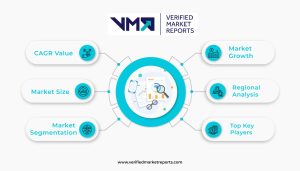1. What is Calibration Management Software?
Calibration Management Software is a system used to automate the process of calibration, ensuring accuracy and compliance with regulatory standards.
2. What are the key factors driving the Calibration Management Software market?
The key factors driving the market include increasing demand for automation, rising regulatory standards, and the need for improved productivity and quality control.
3. What are the main trends in the Calibration Management Software market?
Main trends in the market include the adoption of cloud-based solutions, integration with IoT and AI technologies, and increasing focus on mobile accessibility.
4. What are the major challenges facing the Calibration Management Software market?
Major challenges include the high cost of implementation, lack of awareness about the benefits of calibration management software, and resistance to change from traditional methods.
5. What are the different types of Calibration Management Software available in the market?
There are various types available, including standalone software, cloud-based solutions, and integrated systems with other quality management tools.
6. What are the key applications of Calibration Management Software?
The software is used in industries such as manufacturing, healthcare, aerospace, automotive, and electronics for ensuring the accuracy and reliability of measuring instruments and devices.
7. What are the prospects for the Calibration Management Software market in the coming years?
The market is expected to grow significantly due to increasing adoption of advanced technologies, stringent regulatory requirements, and the need for improved quality control in various industries.
8. What are the major market players in the Calibration Management Software industry?
Major players include Fluke Calibration, Beamex, Ape Software, CyberMetrics, and others.
9. How is the market segmented based on deployment type?
The market is segmented into on-premises and cloud-based deployment models.
10. What is the market share of cloud-based Calibration Management Software?
Cloud-based solutions hold a significant market share due to their flexibility, scalability, and cost-effectiveness.
11. What are the factors influencing the adoption of cloud-based Calibration Management Software?
Factors include the need for remote accessibility, real-time data management, and reduced IT infrastructure costs.
12. How is the market segmented based on end-user industry?
The market is segmented into manufacturing, healthcare, aerospace, automotive, and others.
13. What is the market size for Calibration Management Software in the healthcare industry?
The healthcare industry holds a significant market share due to the need for precision and accuracy in medical devices and equipment.
14. What are the regional trends in the Calibration Management Software market?
Regional trends include increasing adoption of advanced technologies in North America, rapid industrialization in Asia Pacific, and stringent regulatory standards in Europe.
15. What is the role of regulatory standards in driving the Calibration Management Software market?
Regulatory standards play a crucial role in driving the market as industries are required to comply with strict quality control and calibration requirements.
16. What are the key features to look for in Calibration Management Software?
Key features include asset management, calibration scheduling, compliance management, reporting and analytics, and integration capabilities.
17. How is the market for Calibration Management Software expected to evolve in the next few years?
The market is expected to witness increased integration with advanced technologies such as IoT, AI, and machine learning, leading to more efficient and automated calibration processes.
18. What are the factors influencing the pricing of Calibration Management Software?
Factors include the size and complexity of the organization, the number of users, the level of customization, and the included features and functionalities.
19. What are the opportunities for new entrants in the Calibration Management Software market?
Opportunities lie in developing innovative and user-friendly solutions, targeting niche industries, and providing value-added services such as training and support.
20. How can businesses benefit from investing in Calibration Management Software?
Businesses can benefit from improved productivity, reduced maintenance costs, compliance with regulatory standards, and enhanced quality control and customer satisfaction.
 The United States Calibration Management Software Market size is reached a valuation of USD xx.x Billion in 2023, with projections to achieve USD xx.x Billion by 2031, demonstrating a compound annual growth rate (CAGR) of xx.x% from 2024 to 2031.
The United States Calibration Management Software Market size is reached a valuation of USD xx.x Billion in 2023, with projections to achieve USD xx.x Billion by 2031, demonstrating a compound annual growth rate (CAGR) of xx.x% from 2024 to 2031.